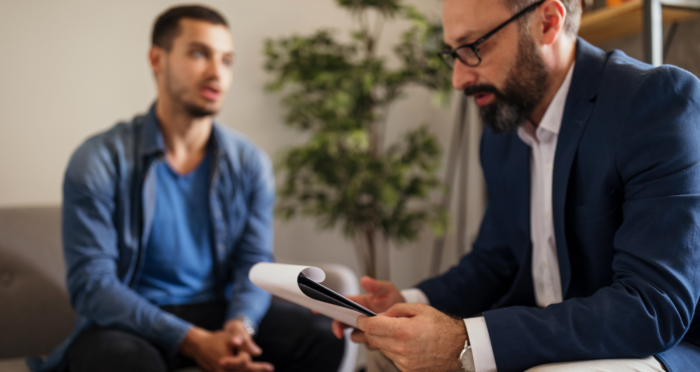It can be so overwhelming to go through stress and anxiety. Feeling like our bodies are full of chaotic energy and not able to calm down can make us seriously wish we had more “control” over our stress reactions.
The thing is, our body’s stress and anxiety reactions are natural and difficult to control with thoughts alone. As a Certified EMDR Therapist, I’ve found that focusing on regulating the body is the fastest way to bring a sense of calm, instead of focusing on “controlling” the feelings through thoughts.
Below are two helpful coping skills for calming your body when your anxiety and stress levels are high, called The Butterfly Hug and Straw Breathing.
The Butterfly Hug
The butterfly hug is a technique that brings a sensation of calming to the brain and body. Please see the steps below to try it out:
- Making the butterfly: Place your right hand on your left upper chest/collarbone, and your left hand on your right upper chest/collarbone. Link your thumbs together while keeping your hands in place. Now, your fingers represent the butterfly “wings”, and your thumbs represent the butterfly’s “body”
- Using your butterfly wings (fingers), tap one side of your chest at a time in a *slow* back and forth rhythm
- Try to simply notice the tapping sensation, let your thoughts follow along with the tapping instead of trying to control what you think about
- After about 30 seconds, pause, and check in with how your body feels. Continue as needed.
Straw Breathing
Straw breathing is a breathing skill that “tricks” your body into thinking it is calm. The trick is to breathe out for longer than you breathe in. Please see the steps below to try it out:
- Take a regular breath in through mouth or nose, at whatever depth is comfortable for your body: it can be shallow, medium, or deep
- Slowly breathe out through your mouth as if blowing through a straw, until your lungs are empty. You can also use a straw to breathe out through if you have one handy!
- Repeat this breath 5x-20x.
Once you feel comfortable using these skills, they can even be used at the same time for a more powerful calming effect (but this does take practice!). I encourage practicing these coping skills regularly, because the more we practice a skill, the easier it is to use when we need it. I hope that these are helpful to you on your healing journey!




